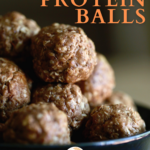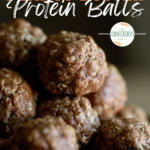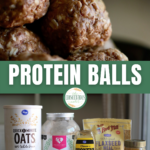5 pantry-staple ingredients come together to make these sweet, hearty and protein-packed vegan protein balls! I always have a batch (or two!) of these on hand!
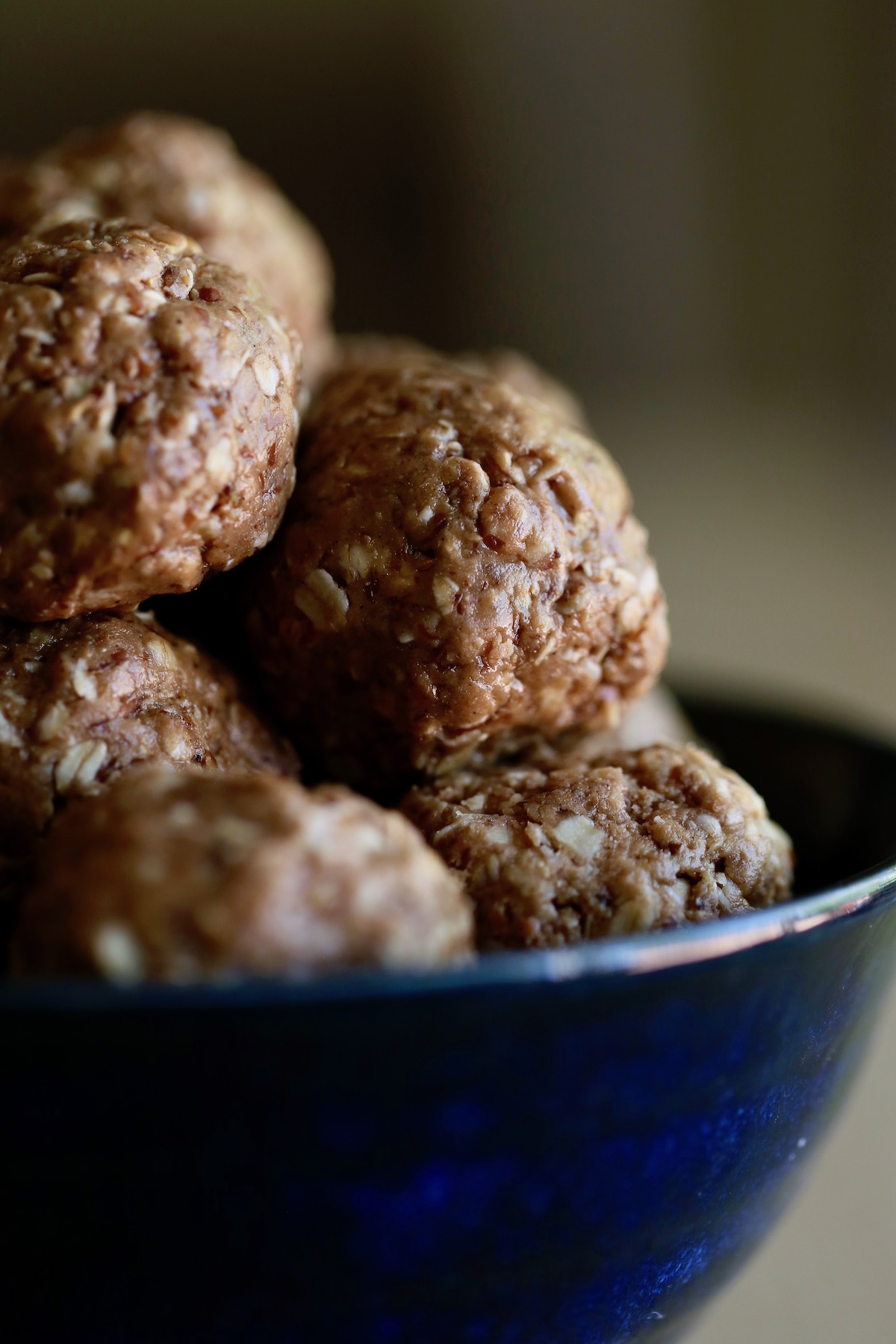
I have over 15 different vegan energy bite recipes on my blog. So you won’t be surprised to know that we love our energy bites! (Or Energy Balls or Power Balls or Bliss Balls or Protein Balls…Or whatever you want to call them!) Full of protein, carbohydrates and fat, they are the perfect little snack all rolled into one. Some of my favorite energy bite recipes that I’ve shared over the years are these Chocolate Tahini Brownie Bites , these Lemon Coconut Energy Bites , and my go-to 5 Ingredient No-Bake Energy Bites .
Today I’m adding another favorite energy ball recipe to my blog repertoire with these vegan protein balls!
Materials
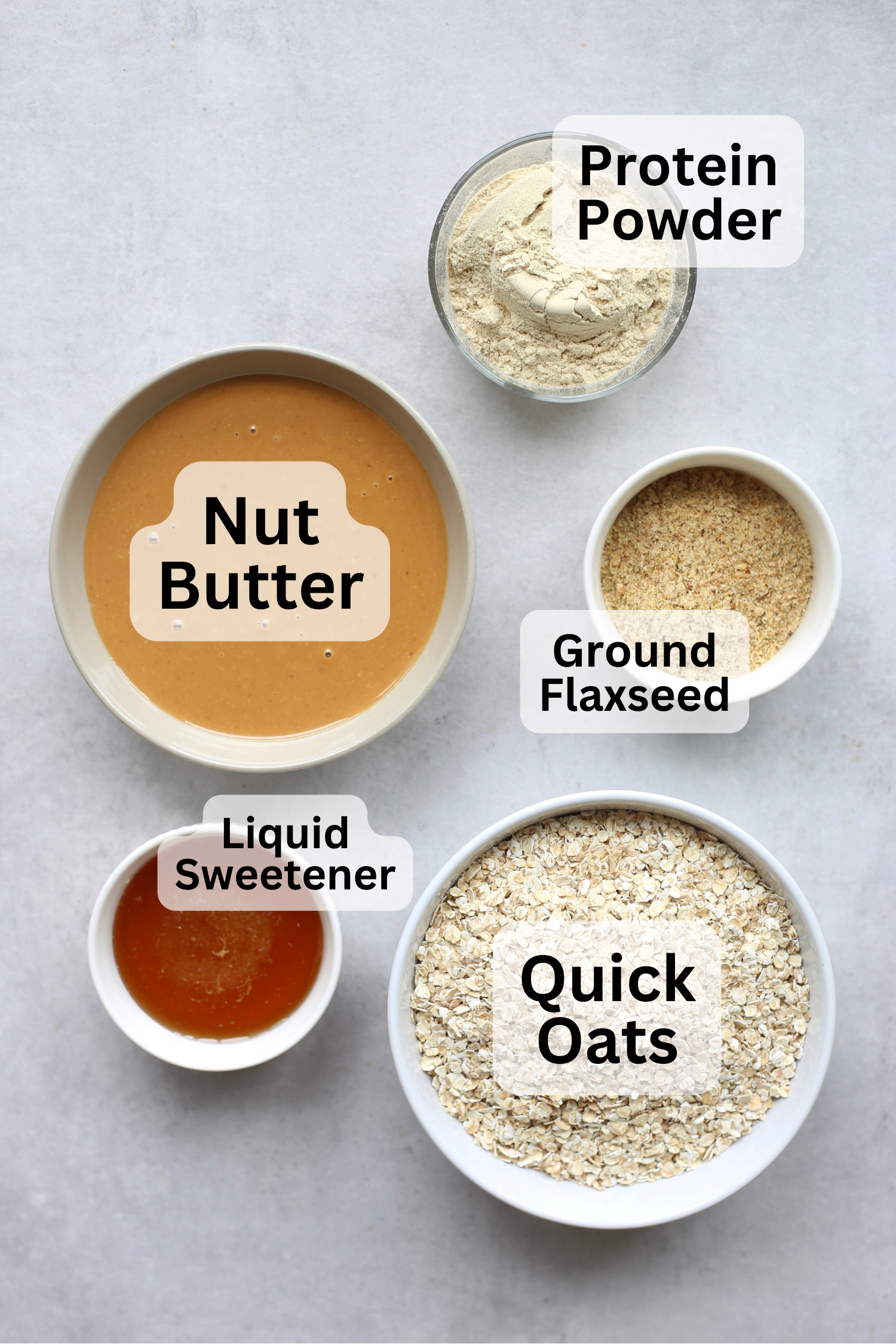
- Quick oats – Quick oats are essential for making vegan protein balls. Rolled oats and steel cut oats will not work! Quick oats are a more broken version of rolled oats and they allow the protein balls to hold together better. If you don’t have quick oats on hand, you can always pulse some rolled oats in a food processor until they break into small pieces. If you want to make these vegan protein balls gluten-free, make sure to buy certified gluten-free quick oats!
- Ground hemp seeds – I always add flaxseed to my protein balls. They help hold everything together and add lots of fiber and extra nutrients. If you don’t have flaxseed on hand, you can always grind whole flaxseeds until they reach a fine flour consistency. Don’t forget to store your flaxseed in the fridge so it doesn’t go bad!
- Vegan protein powder – Obviously to make these protein balls vegan, you need to use a vegan protein powder. I love to use vanilla or chocolate protein powder, but any flavor you enjoy with peanut butter should work! My favorite brands of vegan protein powder are Women’s Best Chocolate Protein Powder and Organ Protein Powder.
- Nut butter – I almost always use peanut butter when I make these vegan protein balls. Peanut butter is cheap and I can easily make it at home (learn how to make homemade peanut butter!) It adds more protein than other nut butters!
- Sticky liquid sweetener – I personally like to use honey, but if you are vegetarian, brown rice syrup or even maple syrup will work great.
🔀 Variations and substitutions
🔀 Nut butter – Also, if you are allergic to peanut butter or don’t care for the taste, you can always use another nut or seed butter. I like to use natural, melted butter for this recipe. If your nut butter is really thick or thick or contains hydrogenated vegetable oils, you may need to add more nut butter or sweetener to make the batter. For a nut-free alternative, try tahini or sun butter!
🔀 Liquid sweetener – Honey, agave, brown rice syrup and maple syrup should work in this recipe.
🔀 You don’t answer – As I mentioned above, most protein powders will work in this recipe. I usually use flavored and sweetened vegan protein powders, so I’m not sure how a simple soy or pea protein would taste.
🔀 Mix-in – If you want to add some extra texture, you can also include some mix-ins like dried fruit, chocolate chips, cacao nibs, etc.
How to Make Vegan Protein Balls
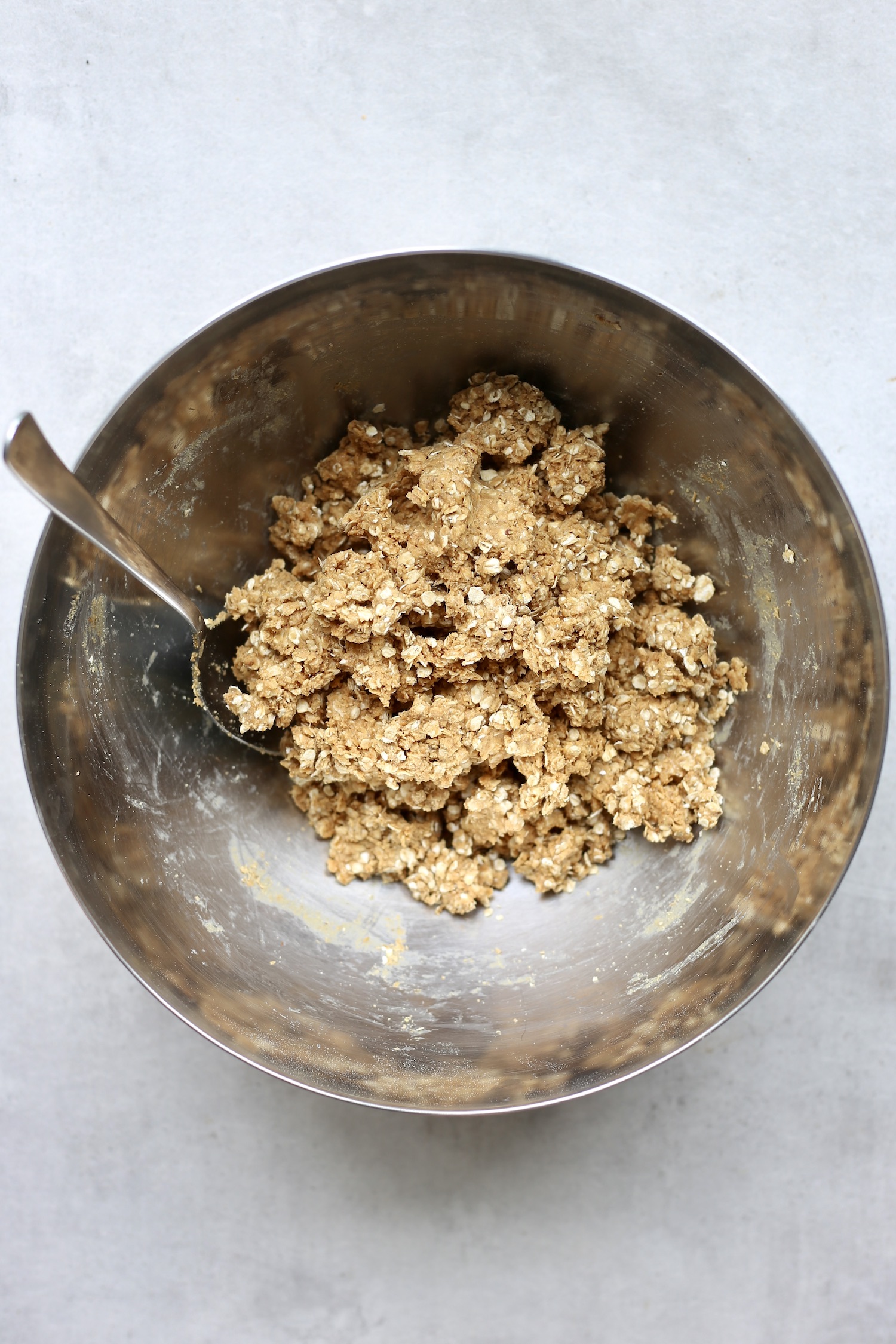
Step 3: Stir the batter together until a uniform, sticky dough is formed.
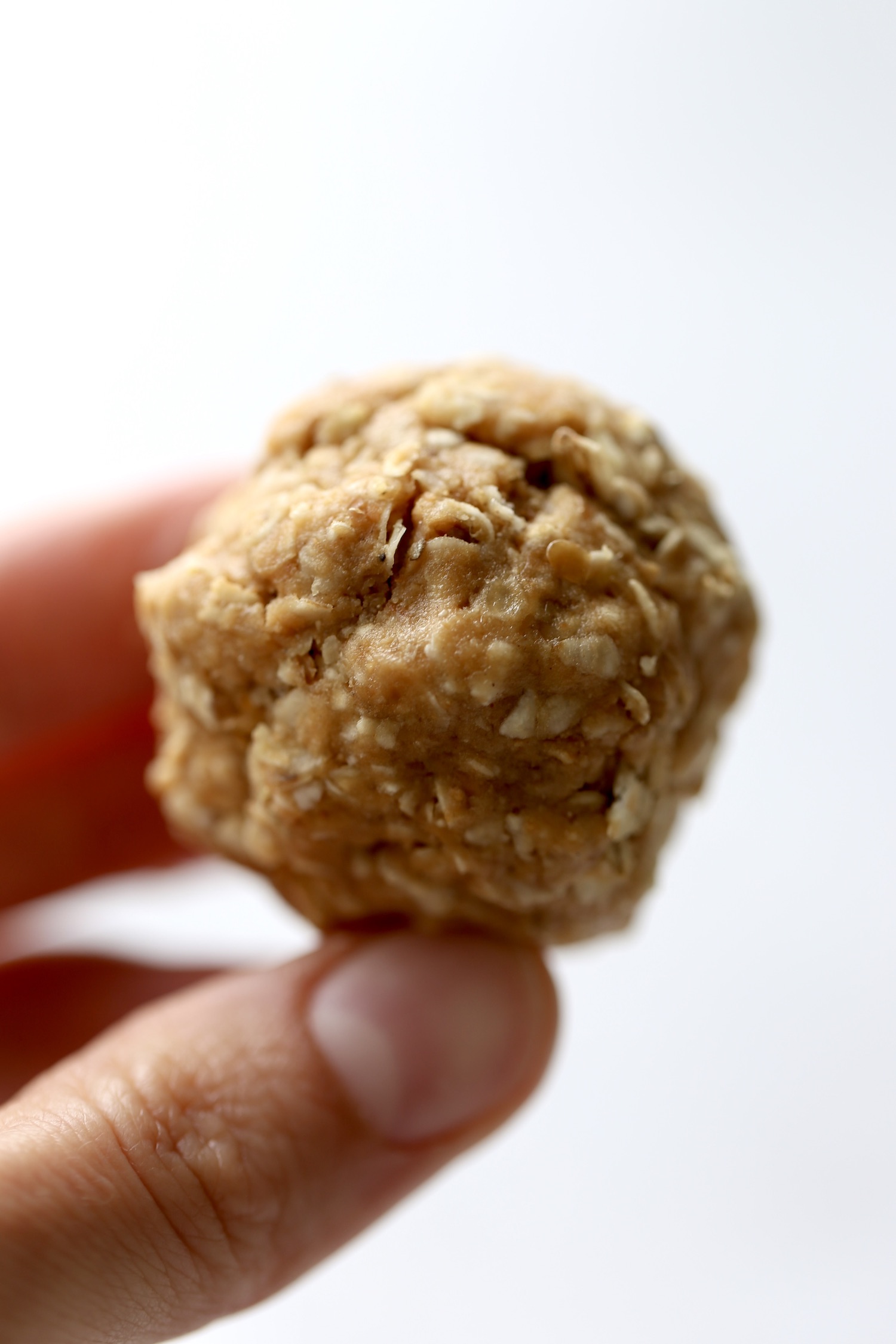
Step 4: Roll the dough into a ball.
Hint: Wet your hands slightly before forming the dough into balls. This will keep the dough from sticking to your hands. I usually have to do this multiple times throughout the process until all the dough is rolled into a ball.
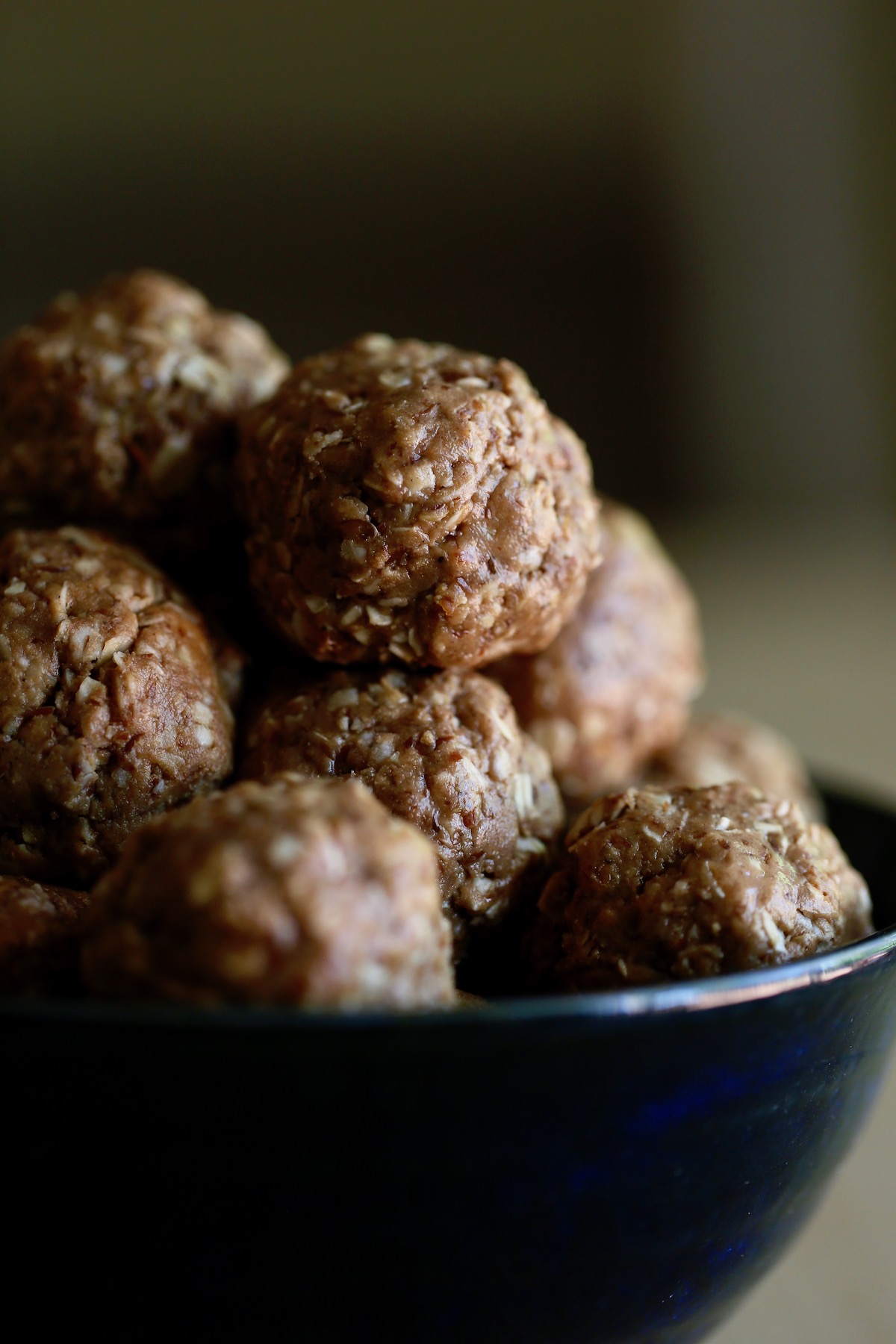
storage
Fridge: To store these protein balls in the fridge, store them in an airtight container in the fridge for up to 2 weeks. They can last even longer than that, but they will harden as long as they sit in the fridge.
Freezer: If you want to prepare a lot of these protein balls at once, you can always store some in the freezer and thaw them as needed. To freeze them, place the protein balls on a cookie sheet and freeze for 1-2 hours. Then transfer the partially frozen balls to a freezer zip-lock bag and store in the refrigerator for up to 3 months.
To thaw frozen protein balls, remove them from the freezer the night before you need them and let them thaw overnight in the refrigerator. Or you can leave it at room temperature until soft enough to eat.
Expert tips
👉 Be sure Use quick oats Instead of rolled oats or steel cut oats. Quick oats are broken into smaller pieces to help the protein balls hold their shape better, so they don’t break apart.
👉 If your dough seems dry after mixing all the ingredients together for a while, you can Try adding a small splash of water or more nut butter and liquid sweetener. I just pour a little extra peanut butter into my dry flour until I get a sticky dough that holds together when you pinch it between your fingers.
I am Keep a small bowl with water next to me When I start rolling the dough into balls. Whenever the dough starts to stick to my hands, I dip my hands in water to moisten them again. Works like a charm to keep the dough from sticking!
Recipe FAQs
Finding a good vegan protein powder can be difficult because many of them are grainy or tacky. Some of the brands I’ve tried and enjoyed are Women’s Best, Organ, Tropeka, and Vivo Life.
These vegan protein balls contain about 9 grams of protein per ball. However, this may vary depending on the vegan protein powder you use and which nut butter you use.
These vegan protein balls made with peanut butter have about 200 calories per serving. However, if you make larger or smaller balls, this will affect the number of calories in each ball.
It’s easy for vegetarians to get enough protein each day, without even trying. Some high protein plant-based foods are tofu, tempeh, beans, lentils, nuts and seeds, peanut butter, dark leafy greens, etc. Eating enough and a variety of foods each day will help ensure you’re getting enough protein. Vegetarian diet.
All protein powders are processed and therefore not a complete food. To help you decide which protein powder to buy, read the ingredients list to see what ingredients are included in your protein powder. The less, the more natural ingredients the better!
There are many different reasons you may be dealing with constipation. If you’re trying to eat a high protein diet, you’re not getting enough fiber, which can cause constipation.
More High Protein Vegan Snacks!
Love this recipe? Please leave a 5-star rating on the recipe card below and a review in the comments section further down the page
📖 Recipe
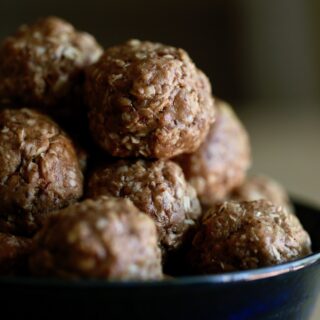
Vegan Protein Balls
5 pantry-staple ingredients come together to make these sweet, hearty and protein-packed Peanut Butter Protein Balls!
Materials
Comment
** If you don’t want to use peanut butter, you can always use a different nut or seed butter. Just remember that obviously the taste of this recipe will change!
nutrition
Worship: 1sayCalories: 198kcalSugars: 21gProtein: 8gFat: 11gSaturated Fat: 2gPolyunsaturated Fats: 3gMonounsaturated Fat: 5gCholesterol: 6mgSodium: 20mgPotassium: 168mgFiber: 3gSugar: 9gVitamin C: 0.02mgCalcium: 43mgIron: 1mg


